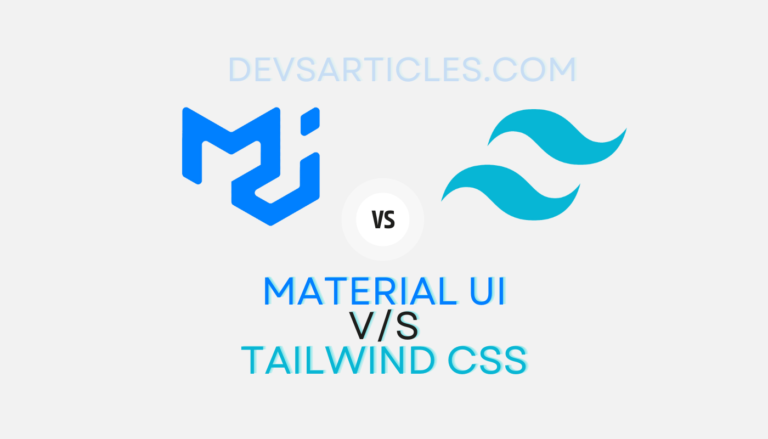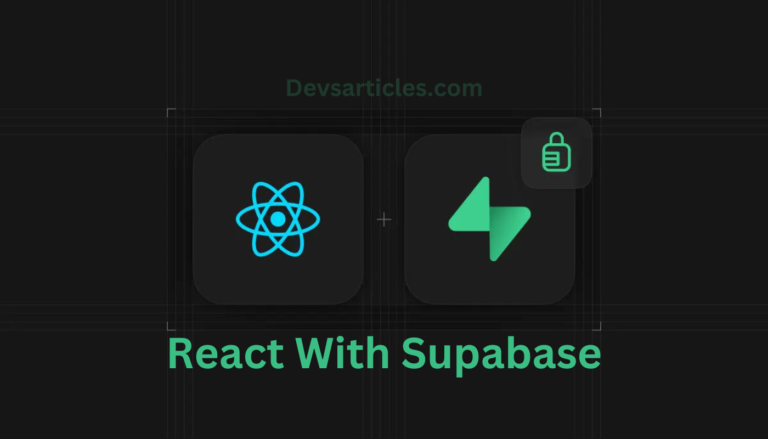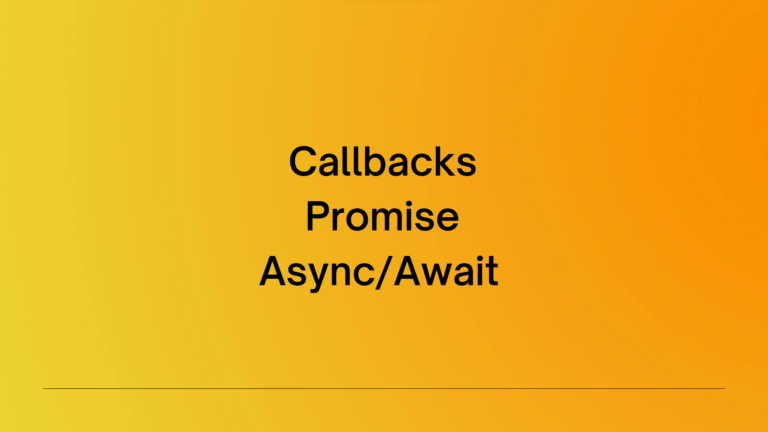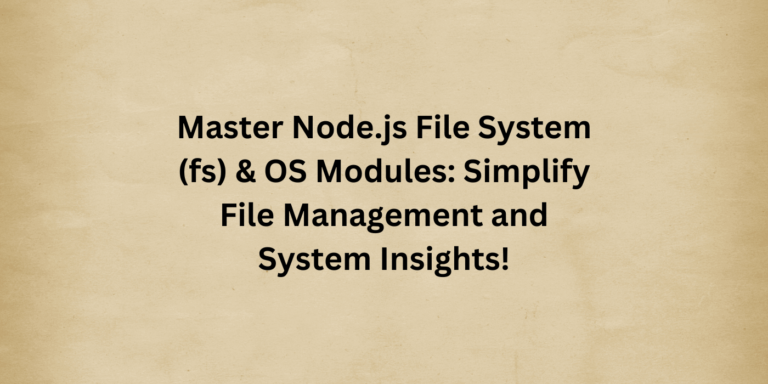Roadmap To Learning complete Frontend Development In 2024
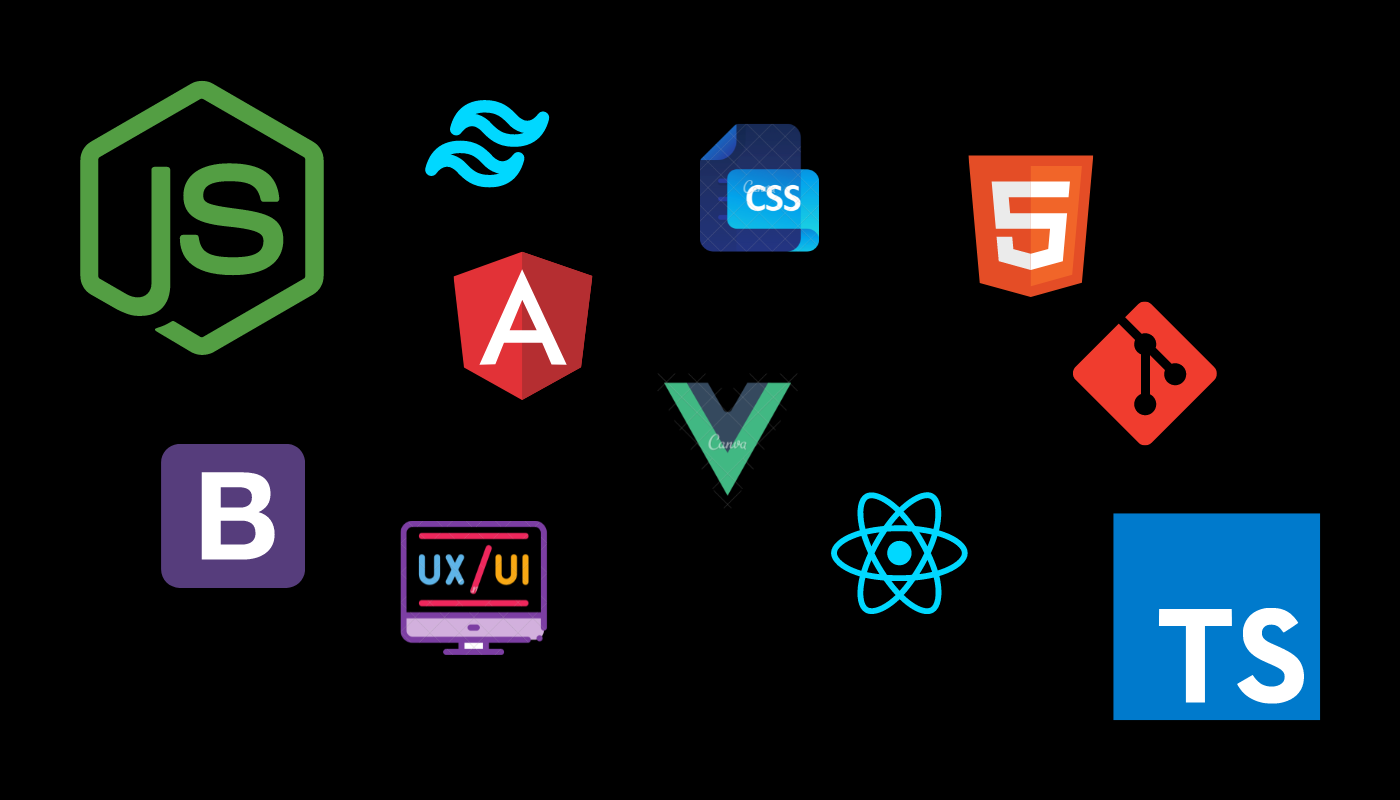
Frontend development is like being a craftsman for websites. Think of it as having a box of tools and every year some new and better tools come out. Whether you’re just starting out or want to level up your skills. Having a plan is like having a roadmap to guide you through this journey.
Table of Contents
HTML and CSS Essential For Frontend Development
HTML and CSS are like the building blocks of the frontend world. HTML is what gives structure to your content like creating the skeleton of a web page. CSS on the other hand is like the artist’s palette adding colours and styles to make it visually appealing.
To be a pro in these it’s crucial to understand the latest HTML5 elements. Making your content more meaningful and organized. Accessibility is key too. It’s about making sure everyone regardless of abilities can easily access and use your site. Responsive design is like making your creation adaptable to different devices and knowing CSS techniques like Flexbox and Grid helps in crafting layouts like a pro.
For a trendy touch explore frameworks like Tailwind CSS. It’s like having a toolkit that speeds up styling with pre-built classes. Practice is essential – build actual web pages and components. It’s like honing your skills in sculpting and painting before attempting complex art pieces. Once you’ve got a solid grip here you’ll be ready to explore more advanced frontend development topics.
JavaScript Fundamentals
JavaScript is like the powerhouse behind making websites interactive and dynamic. To become a wizard in this language start by building a strong foundation. Learn the basics like how to use variables, functions, objects and arrays.
The DOM is like the wizard’s wand – it lets you manipulate and change elements on a web page. Understanding events is like casting spells triggered by user actions.
Now with modern JavaScript ES6+ there are some fancy new tricks to learn. Imagine upgrading your wand to have cooler features. Dive into concepts like arrow functions, classes, template literals, destructuring assignments and async/await.
Tools like ESLint are like your mentor helping you follow the best practices and style rules. It’s like having a wise guide making sure your magic spells are cast correctly.
So in the world of web development JavaScript is your go-to language. Master its fundamentals embrace the modern upgrades and soon you’ll be enchanting websites with your coding skills
Build Tools
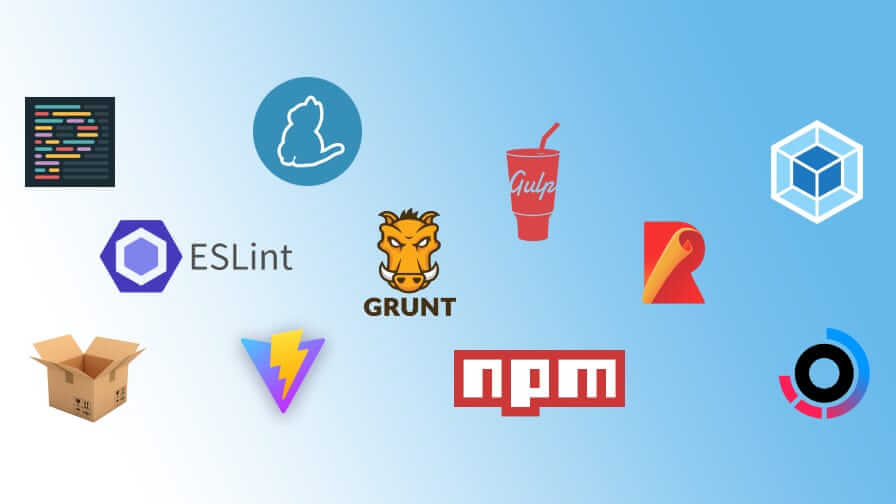
Build tools are like superheroes for websites. They help make everything work smoothly behind the scenes. Imagine you’re building a cool castle and these tools are the helpers making sure it’s awesome.
Webpack, Parcel, Vite and esbuild are like your construction crew. Learning how to use them is like figuring out the best way to put your castle together. It’s especially important when you’re using cool things like React or Vue.
Think of module bundling as packing your castle’s stuff into neat boxes. Code splitting is like having different rooms for different things so you only get what you need when you need it. Transpilation is like translating your instructions into a language everyone can understand even if they’re using an older magic spell book.
Hot reloading is like having magical workers who quickly update your castle whenever you make changes. Tree shaking is like a smart gardener making sure your castle isn’t weighed down by unnecessary things keeping it light and fast.
Understanding these building concepts is like having a secret code to unlock amazing possibilities. So play around with these tools see how they work and soon you’ll be the master builder of fantastic websites
TypeScript
Think of TypeScript as an upgraded version of JavaScript. It’s like JavaScript but with a superpower. Ability to catch mistakes early on.
When you’re using TypeScript you’re basically speaking a more structured language. You need to get comfortable with the new words and phrases it introduces like syntax, primitive types and complex types.
Interfaces are like templates that say “Hey, this is how the information should look.” Generics are like magic boxes that can hold different types of things without you knowing exactly what they are.
Enums are handy when you have a fixed set of options like choosing from a list.
Now when you use TypeScript in actual projects. It’s like turning on a superhero mode for your code. It helps you find and fix issues before they cause chaos.
Styling Solution
In the world of web styling. There’s more than just plain CSS. Picture yourself as an artist with various brushes for different strokes. Similarly for web development alongside the trusty vanilla CSS there are specific tools to enhance your styling game.
For React developers Styled Components is like a specialized palette for each component. Ensuring styles are encapsulated and won’t clash. CSS Modules act like name tags that keeping styles organized and preventing mix-ups when dealing with numerous components. On the utility-first side Tailwind CSS offers a toolkit of pre-defined classes for common styles and streamlining the styling process with consistency.
Each styling approach is like a different tool in your creative arsenal. It’s beneficial to explore and experiment trying out Styled Components, CSS Modules or Tailwind CSS based on your project’s needs. Think of it as selecting the right brush for the artistic masterpiece you’re crafting in the world of web styling.
Testing For Frontend Development
Think of testing as your safety net in coding – it’s like having a trusty toolkit that ensures your code is strong and reliable. It might not be the most exciting part but it’s crucial for building robust applications.
In the React world testing comes with its set of tools each serving a unique purpose. Jest is like your detail-oriented investigator that checking the nitty-gritty details of your code to catch any issues. React-test-renderer is more like a vigilant photographer taking snapshots to ensure your components look the same every time.
For the broader picture you’ve got Cypress a reliable companion for end-to-end testing. It behaves like a user navigating through your app to make sure everything works seamlessly. Then there’s React Testing Library your personal inspector for components that making sure they not only work but also meet user expectations.
It’s like having a blueprint before you build something. You write tests before your code, ensuring a solid foundation and boosting your confidence in your work.
So, testing is your coding companion that make sure your creations stand strong and perform well in the real world.
Progressive Web Apps – PWA
Progressive Web Apps are like superheroes among web applications that bridging the gap between web and native experiences. To empower your web app. You need skills like enabling offline functionality, sending push notifications for timely updates, allowing users to add your app to their home screen for quick access and employing smart strategies like lazy loading assets and caching with service workers to ensure speedy performance.
Frameworks like Next.js act as magic spells for PWAs integrating PWA capabilities seamlessly. With these skills and tools your web app can become indistinguishable from native applications providing users with a powerful and engaging experience across various devices.
Web Performance
In this world of web development performance is the unsung hero of successful applications. To supercharge your web app dive into essential performance techniques. Learn to break down your code into manageable parts with code splitting that check only necessary resources load when needed. Optimize images to strike the perfect balance between quality and loading speed and embrace asynchronous loading to prevent delays.
Other game-changing techniques include compressing data payloads, caching to store frequently used information for quicker access, avoiding disruptions to the critical rendering path, tree shaking to eliminate unnecessary code and lazily loading assets as required. Monitoring performance metrics and conducting audits should be your compass guiding decisions to continually enhance the speed and efficiency of your web app.
In short web performance play crucial role in frontend development
Web Accessibility
Prioritizing accessibility in web apps is not just a checkbox. It’s a fundamental aspect of responsible development. Equip yourself with essential practices such as understanding ARIA roles, managing focus effectively, maintaining adequate colour contrast, utilizing semantic HTML for clear structure, enabling keyboard navigation and conducting thorough screen reader testing. While frameworks like React offer supportive elements but fostering accessibility begins with the dedication and awareness of developers to ensure that digital experiences are inclusive and usable by everyone. Accessibility should be a core consideration from the outset not an afterthought.
Connecting Backend with Frontend Development
In the era of frontend development. Having a solid understanding of backend integration can be transformative. Think of it as knowing both the front and back doors of a house. Basic knowledge of REST_APIs is comparable to understanding how different parts of a building communicate. It’s the language that allows the frontend and backend to exchange information. Delving into server-side technologies such as Node.js with Express opens up insights into handling server requests and responses essentially giving you the keys to the backend operations.
Now when it comes to serverless architectures platforms like Firebase, Netlify or Vercel act like wizards handling backend functionalities without the need for traditional servers. It’s like having a magical solution that scales seamlessly. And exploring straightforward databases like MongoDB and Postgres is comparable to understanding the backend’s data storage and retrieval system. Completing the puzzle of how information flows between the frontend and backend. While you don’t need to become a backend expert being conversant with these backend environments and patterns empowers you to contribute more comprehensively to full-stack projects where both frontend and backend components work in harmony.
Backend integration for a frontend developer is like knowing the backstage operations of a theater production. It might not be your main stage but understanding how it functions enriches your overall performance and collaboration in the web development world.
Deployment Environments
In the journey of a frontend application reaching the deployment and hosting stage is pivotal. It’s like finding the perfect stage for your masterpiece. Acquiring skills in platforms such as Netlify, Vercel and Firebase coupled with understanding concepts like CDNs, caching strategies, HTTP servers and DNS is akin to having a map to navigate through the deployment landscape. These tools and concepts demystify the process to make sure your application reaches its audience seamlessly.
For those seeking the pinnacle of flexibility delving into Infrastructure as Code tools like Terraform and Cloudformation is like having a master key to customize your deployment environment. These tools allow you to define and manage your deployment infrastructure through code that providing a powerful way to orchestrate and automate the deployment process. Understanding the intricacies of deployment environments is crucial for a frontend developer as it ensures your applications not only look good but also perform optimally in the real-world digital arena.
Design and UI Skills
In frontend development incorporating basic visual design skills significantly elevates your craft. Understanding design concepts and utilizing tools like Figma for prototyping create a collaborative space between developers and designers. This ensures your frontend work aligns seamlessly with envisioned designs fostering a more polished and user-friendly end product. Delving into design principles such as color theory, typography, spacing and information architecture equips you with an additional set of tools to enhance the aesthetics and user experience of your applications. These skills allow for more informed decision-making, ensuring that your frontend work is both functional and visually engaging.
For those less inclined towards the artistic side libraries like Tailwind CSS act as a bridge enabling non-designers to effortlessly create visually appealing interfaces. By incorporating design and UI skills into your frontend toolkit. You add a layer of finesse, making your applications not just functional but also aesthetically impactful. It’s a harmonious blend that ensures your frontend work doesn’t just meet technical requirements but also delivers a delightful user experience.
Core Web Vitals
Core Web Vitals sets the standard for crucial user-centric performance metrics. Striving for exceptional scores in metrics such as Largest Contentful Paint, First Input Delay, Cumulative Layout Shift and other core vitals is paramount. It’s like aiming for a smooth and seamless user experience. Utilizing tools like Lighthouse becomes crucial in this pursuit that offering detailed audits and diagnostics to identify areas for improvement in these vital performance aspects. It’s akin to having a performance coach for your website guiding you to enhance user satisfaction by ensuring fast-loading, responsive and visually stable web pages.
Stay Updated With Techonology
To do well in frontend development you need to keep up with the latest stuff. Imagine it’s like staying updated with the coolest gadgets. Spend some time each week reading articles, tutorials and checking out places like Hacker News and forums. It’s like adding new tools to your toolbox regularly the more you have the better you can build things. Think of conferences like JSConf as super quick lessons that give you cool ideas. Staying updated is not just about keeping in the loop it’s about staying ahead and getting better at making awesome stuff on the web.
Conclusion
In the dynamic realm of frontend development picture yourself as a craftsman continually refining skills and expanding your toolkit. HTML and CSS form the foundation acting as the building blocks of your creations. Understanding HTML5 elements accessibility and responsive design crafts a robust base. JavaScript your powerhouse that adds interactivity with modern ES6+ bringing new tricks to your coding repertoire. Build tools act as indispensable helpers ensuring your creations stand tall while TypeScript provides an upgraded coding experience.
Styling solutions offer varied approaches – from Styled Components for React to utility-first styling with Tailwind CSS. Testing becomes your trusty toolkit for ensuring reliability and robustness that resembling a blueprint before building something grand. Progressive Web Apps (PWAs) emerge as superheroes for blending web and native experiences seamlessly.
Web performance, web accessibility and connecting frontend with backend form pillars of excellence. Each contributing to the reliability and inclusivity of your digital creations. Deployment environments become your stage with Infrastructure as Code tools acting as master keys for customization. Design and UI skills add finesse making your applications not just functional but visually impactful. Core Web Vitals set standards for performance metrics and staying updated is like adding new tools regularly to your ever-expanding toolbox.
In conclusion the journey in frontend development is a constant evolution that requiring adaptability and a commitment to learning. Equip yourself with the latest tools, techniques and best practices for each new challenge as an opportunity for growth. Stay curious stay updated and continue crafting exceptional web experiences.
FAQs
What is Frontend Development ?
Frontend development involves creating the user interface and user experience of a website or web application. It focuses on designing and implementing the visual elements that users interact with.
How do Progressive Web Apps (PWAs) impact Frontend Development ?
PWAs bridge the gap between web and native applications that offering enhanced user experiences. Frontend developers need skills in enabling offline functionality, implementing push notifications and optimizing performance for PWAs.
Why is Testing important in Development ?
Testing ensures the reliability and robustness of frontend code. Tools like Jest, Cypress and React Testing Library help developers catch and fix issues early in the development process contributing to the overall quality of web applications.

